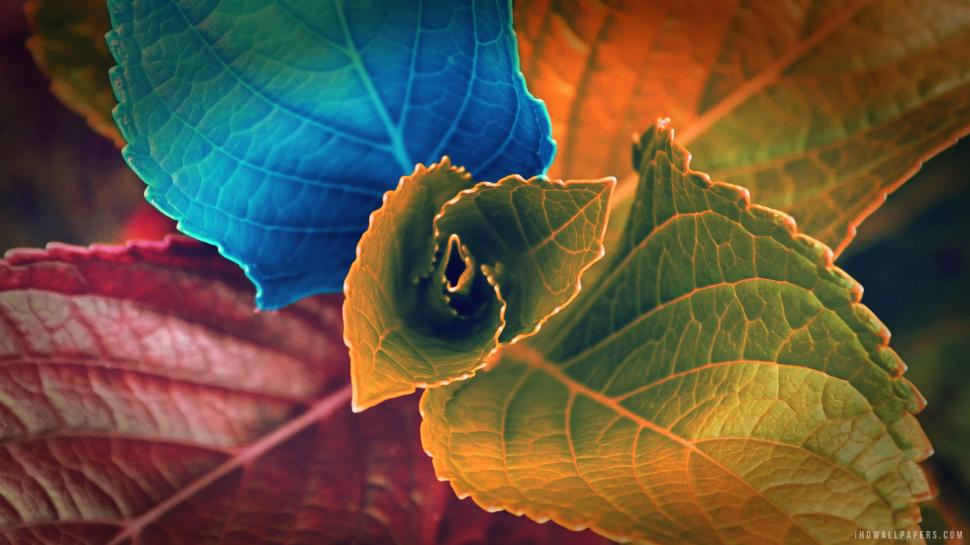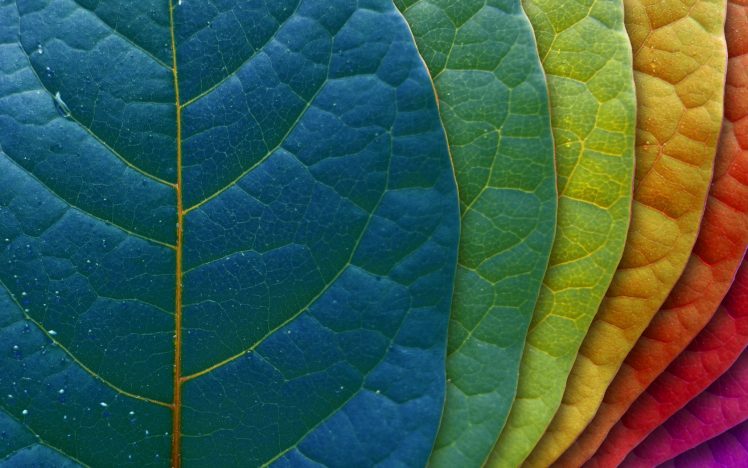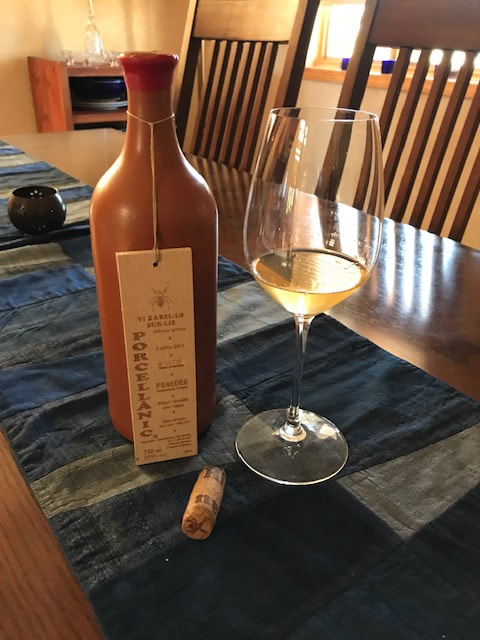n
Jamie Goode
Recently I was in Brooklyn for a meeting. Dinner the first night was with four MS colleagues. The menu was shellfish and seafood-based and the wine list was small but eclectic—no surprise given that we were in Brooklyn. Dinner was delicious and the conversation ranged from sports to books to movies to politics to—you guessed it—wine. For the last bottle of the evening, someone in the group decided to order the most expensive wine on the list, an Etna Rosso that was a natural wine. If not familiar, natural wine is loosely defined as wine made with minimal intervention and without added sulfur.
In short order, the bottle was brought to the table and opened. In the glass the wine was cloudy and fizzy. On the nose it showed a tsunami of fingernail polish remover from EA (ethyl acetate)—the highest level in any wine I’ve ever tasted. On the palate, the wine was fizzy, funky, and tasted like homemade cider still fermenting. No doubt the wine was still going through malo-lactic fermentation/conversion. The EA was another problem entirely and probably due to serious fermentation issues.
A spirited discussion immediately ensued, or erupted, to be more precise. Mind you, the five of us sitting at the table collectively have over a century of experience in the industry. In short order, many global-level questions quickly fired out:
Does wine quality actually matter?
Should quality always be a top priority in buying wine for a restaurant list?
Does winemaking process–or lack thereof–trump place/terroir and/or quality?
Does appellation matter in the context of natural wine?
How does natural wine fit into the context of a wine list and program?
How should natural wine be explained and sold tableside to diners unfamiliar with the category?
Does natural wine need standards and a certification like organic wine and biodynamics?
Ultimately, is this an age-demographic issue?
Should we, as wine professionals even care?
The initial point I made to my colleagues after we tasted the wine was this: our generation and those before us focused on studying and mastering classic grapes and wines with the goal of being able to judge quality measured against historically established benchmarks. That’s what our jobs as buyers required us to do. The generations that have followed haven’t necessarily used the same model. They didn’t always pursue formal training or certifications with emphasis on the classics. Instead they focused on what potentially could and would be the most novel style of wine possible in the moment—and that definitely includes natural wine. And wine quality—and knowledge of it—seems to have become a secondary goal.
One of my colleagues offered the thought that sommeliers have a unique window into the wine universe. It’s a view of immediacy where buying decisions are informed by previous experience that helps to create a wine list and program based on quality, typicity, and balance. And the wines chosen for the list should be able to sell without the buyer on the floor to explain them. Further, our years of experience provide us the knowledge to make consistent buying decisions that will please our guests tonight—and not months or even years in the future.
Another remark made during the discussion was that there are any number of great wines made “naturally,” with little so-called intervention and minimal use of sulfur. However, these wines are made by skilled winemakers who have formal training and considerable experience. With few exceptions, they choose not to call their wines “natural” and for obvious reasons. Finally, someone else in the group equated the more vocal proponents of the natural wine camp are not unlike the anti-vaccination movement.
Context and Wine Faults
In the way back machine when I was studying for the exams, I paid $250 to smell and taste bad wine for an entire day. Such is the life of a budding wine acolyte. There’s more. I had closed down the restaurant on a Friday night around 1:00 AM with a good friend/fellow sommelier. A few hours later, we both got up at the crack of dawn and met. Strong coffee and something fried and topped with sugar were quickly procured and then we drove to U.C. Davis about 90 minutes away. There, under the instruction of a Davis professor who was a wine chemist, we were tutored for an entire day on the perils of common wine faults. The professor’s delivery was about as scintillating as dry wall. The class notes came in the form of a thick binder filled with diagrams of chemical compounds that for all the world looked like Sanskrit to me (my science career ended with ninth grade biology).
Throughout the day, we were subjected to glasses of wine doctored with varying levels of faults, some at saturation levels. Regardless of the tedium and confusion, the class worked. TCA, Brett, VA, and other faults were indelibly burned into my brain and nervous system. For better or worse, they probably can never be removed. Beyond the olfactory trauma, the instructor hammered home the idea that even trace elements of faults render wine quality questionable, if downright compromised. That maxim, too, stuck for a long time.
Looking back, I now know that the subject of wine faults is not so easy. As with everything else in wine, context has a major role to play. I’m not alone here. In his new book, “Flawless: Understanding Wine Faults,” Jamie Goode offers a different view on Brett, excessive VA, and more. He writes that context, place, and the specific wine all are parts of the wine hygiene equation. That with some wines, higher levels of Brett and VA are not only commonplace, but historically acceptable. He does draw the line at TCA, which he universally considers a fault. Here are two of my favorite quotes from the book’s introduction.
“I want to introduce a concept that I think is really helpful for understanding wine faults, and for grasping the notion that some flavor chemicals can be both faulty and positive, depending on the concentration and context.”
“I will argue that the most attractive, compelling wines are those that have elements of their character that, if they were in a different context or present at higher levels, might be considered faulty. When if volatile acidity too high? When is greenness good and when is it too bad? When are tannins too grippy and firm? When are earthy, spicy characters off-putting? When is savoriness or gaminess too prominent? When is new oak too obtrusive? When does a wine pass from mature to senescent?”
Goode’s book then goes on to break down all the common wine faults in detail, including lady bug taint and eucalyptus taint that I hadn’t previously considered as such. But his questions above stayed with me long after I had finished the book. In many cases, how much is too much? And how is it that we as a group at the table instantly knew the Etna Rosso had unacceptable levels of EA and was in fact flawed? After all, there are more than a few classic wines (Amarone and Barolo to name two) where high levels of VA are not only common, they’re traditionally found and even expected. The same goes for Brettanomyces.
As for Goode’s book, I think it should be required reading for any student on an exam track—and most professionals too. Be forewarned that there is more than a fair amount of chemistry in the text.
The Wines of Ton Rimbau
By now you might be convinced that I’m categorically against natural wine. However, this is not the case. In the year before I moved back to New Mexico, I worked with Paco (Francisco) Cifuentes in San Francisco to help put his Spanish wine portfolio together. His company is called Whole Wine. Paco is a Silicon Valley molecular biologist originally from Madrid. Over the course of several sessions, Paco and I tasted bottlings from over two dozen Spanish producers I’d never heard of. All farmed organically or biodynamically and several made natural wines. The most memorable producer in the tastings by far was Ton Rimbau from the Penedès. Rimbau makes a Cava and two bottlings of Xarel-lo. All are natural wines. But Rimbau, even for a natural winemaker, is a bit of an extremist. Let me explain.
In the vineyard, Rimbau puts magnets on the trunks of the vines to balance their polarity. At some point, he dug a 40-foot deep well on his property and filled it with artesian water. He bottles all his wines in porcelain crocks and ages them under water for a minimum of four years. As for wine packaging, Rimbau has all the wine/winery information embossed on a piece of small piece of wood which is then tied to the neck of the bottle with a piece of twine. Needless to say, he had to be convinced/coerced by Paco to put a back label on his wines to get them into the U.S. The results? I’ve tasted the wines several times and found them to be not only utterly curious but more than drinkable. And aside from some noticeable VA, the wines are clean and well-made. Should you be interested, information about Rimbau’s wines and Paco Cifuentes’ Whole Wines portfolio can be found here:
www.sensewines.com/ton-rimbau
As we tasted the volatile, fizzy, and very pricey Etna Rosso, what came up unanimously was that the natural wine category desperately needs standards and a certification like organics and biodynamics. The industry—and the public for that matter—needs to be able to clearly understand what the term “natural” actually means in regards to wine in the bottle. The sooner these standards and a certification are adopted and used, the better.
Where does that leave us? In the end, I can only address the questions our group posed with my own answers. Here goes.
Q: Does wine quality actually matter?
A: Yes, it absolutely does. Otherwise there are no metrics for consistency, much less standards, for what constitutes great, good, indifferent, and bad wine. Judging wine quality can only come about through a process of education about classic grapes and wines. And that process presupposes a duration of time and experience.
Q: Should quality always be a top priority in buying a wine for a restaurant list?
A: Once again, absolutely. The traditional role of a buyer has always been to serve as a filter of sorts to be able to offer guests/clients wines that are clean, well-made, and typical of the appellation; wines that ultimately can be recommended and sold without hesitation. This is not pie-in-the-sky whimsy I’m talking about–it’s business. And any business cannot survive, much less thrive, without long-term repeat customers. Selling lousy or flawed wine is not exactly a win-win for a restaurant much less anyone else.
Q: Should winemaking process–or lack thereof–trump terroir and/or quality?
A: In my opinion, an emphatic NO. Any sense of place/terroir can easily be blurred, much less obliterated by winemaking–especially bad winemaking. Fizzy, unstable wine is universal. It knows no specific style, place, or grape. That is not to say that there is an entire category of commercially produced—sometimes mass-produced—wine that is also totally devoid of a sense of place. In that case it’s all about over-processing and lowest common denominator for the sake of a price point.
Q: Does appellation matter in the context of natural wine?
A: I think it potentially can if tradition and long-term practice in a particular place point to a wine style that can be called natural.
Q: How does natural wine fit into the context of a wine list and program?
A: I think natural wine can potentially be part of most wine programs with the caveat that the buyer/sommelier and staff must be trained on the wines and how to sell them. Further, that everyone involved also understands that natural wine is a style of wine and not the end-all or be-all of the entire wine universe.
Q: How should natural wine be explained and sold tableside to diners unfamiliar with the category?
A: I think natural wine should be sold at the table as a specific style of wine with an explanation about the intent of the winemaker, lack of preservatives during winemaking, non-filtration, etc. Mind you, all this has to be explained at a level where a diner/consumer can understand what they’re getting in the glass. That’s not exactly easy. Finally, any mention that natural wine is the only “true” style of wine should be avoided at all cost. This is utter nonsense.
Q: Does natural wine need standards and a certification like organic wine and biodynamics?
A: All roads lead to the answer “yes.”
Q: Ultimately, is this an age-demographic issue?
A: I think this may be a knee-jerk reaction/response by those in the natural wine camp when they get push back for seriously variable wine quality. It’s not exactly, “you kids get off my lawn,” but it might point to the ability—or lack thereof– to judge wine quality based on experience.
Q: Should we as wine professionals even care?
A: Yes! We absolutely should and must care. Otherwise we should get out of the business and go do something else entirely.
Coda
Sometimes I think that wine universe is like a never-ending moveable feast that is constantly changing and evolving. Some wines delight while others simply confound. But the possibility of surprise will always exist and often in unexpected moments. With that, I won’t hesitate to taste natural wines in the future. I also look forward to standards and a certification for natural wine with great anticipation.
nn


